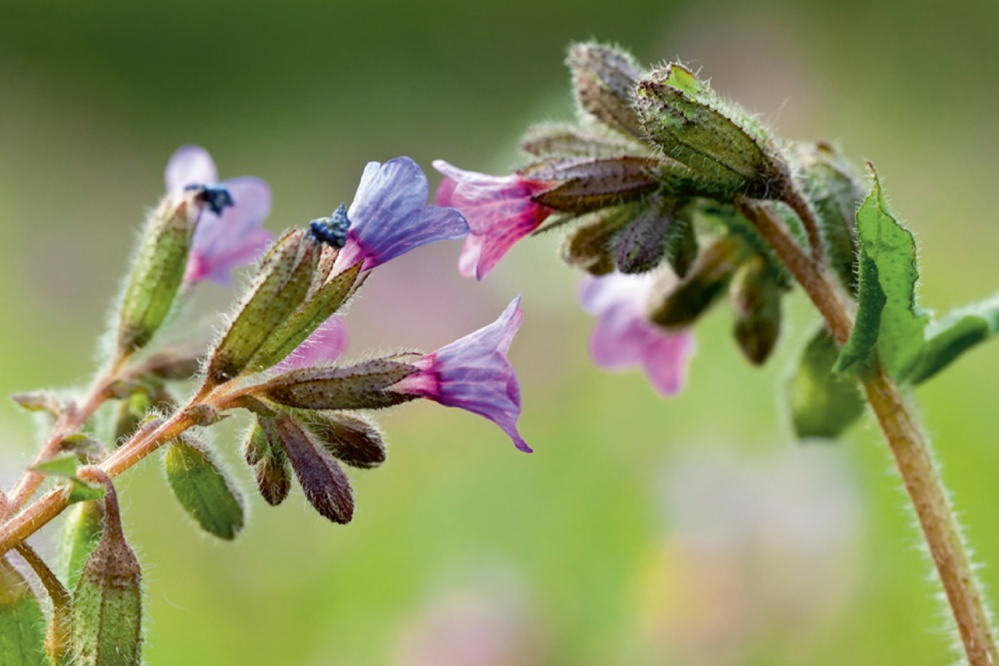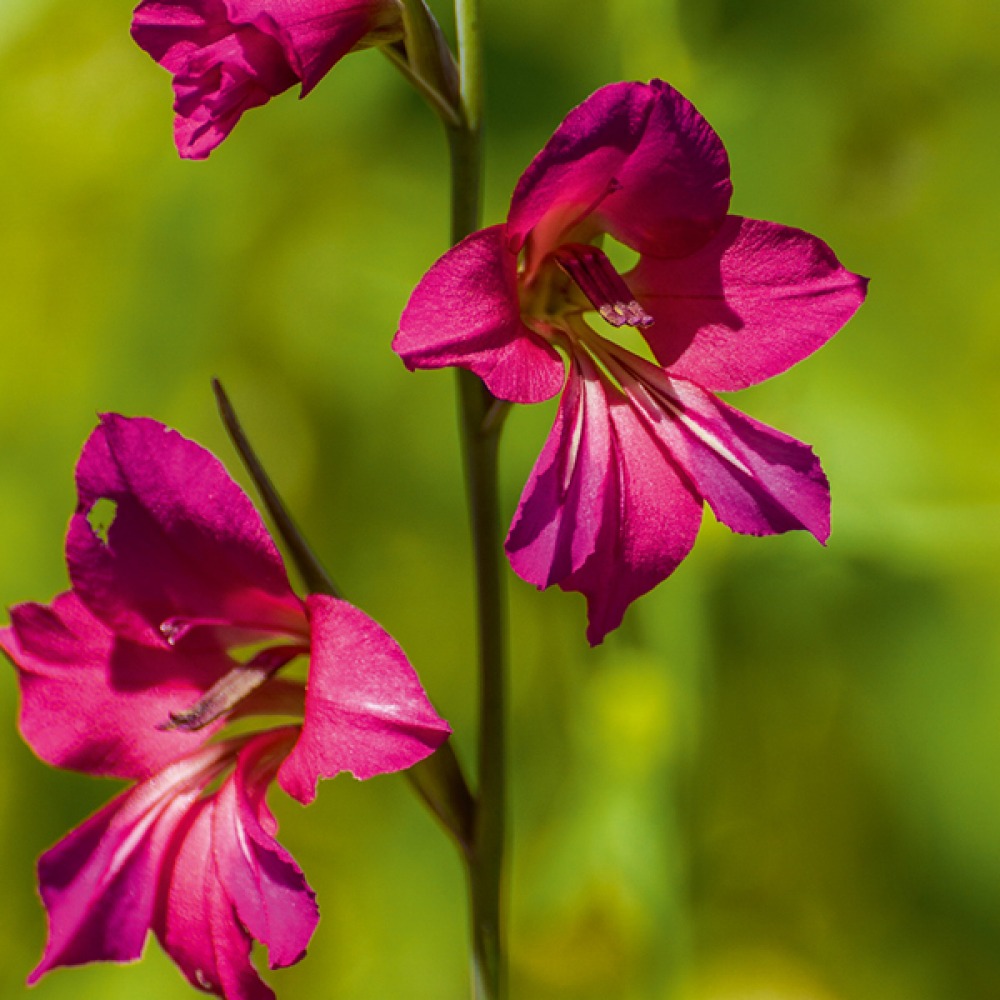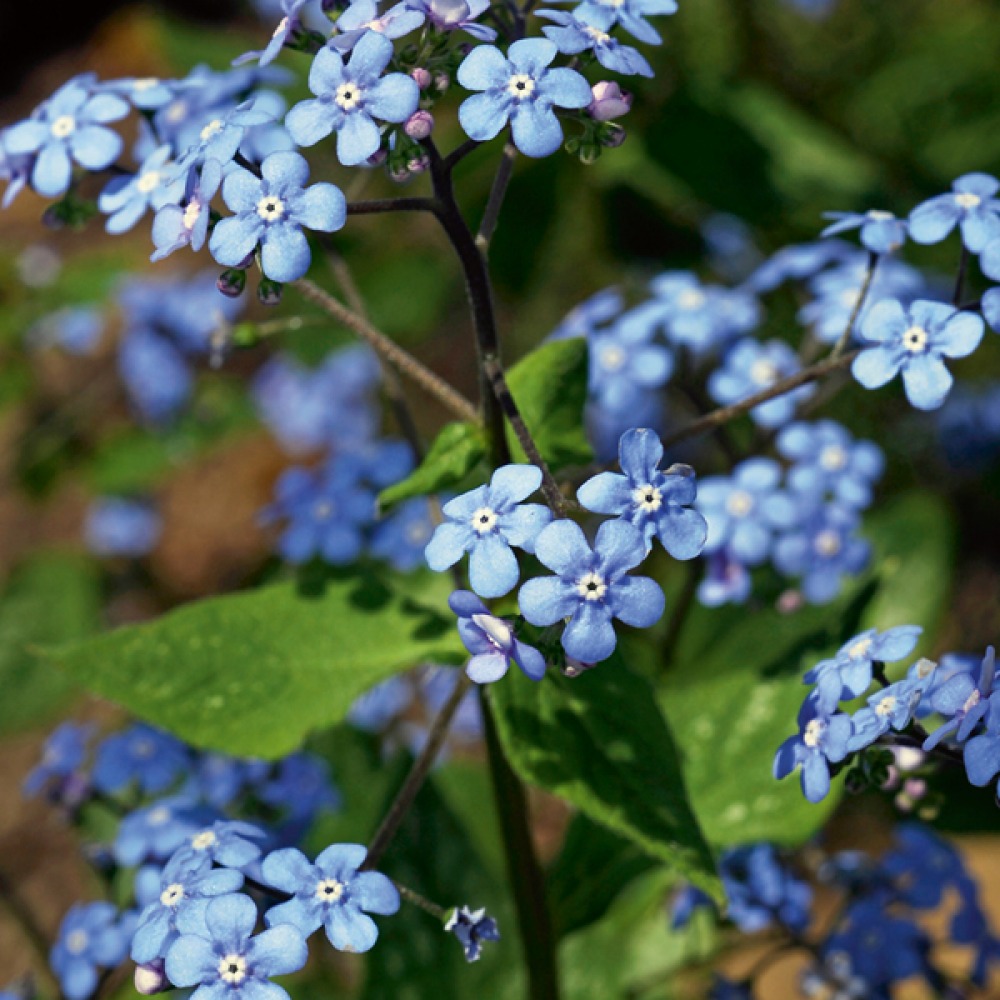Here Comes Summer

Make your garden come alive this summer with help from Vanessa Cook of Stillingfleet Lodge Gardens and Nurseries

Many plants with attractive leaves and flowers work well throughout the summer, but Brunneras earn their keep in spring. Brunnera ‘Jack Frost’ has large heart-shaped leaves sprinkled with silver and blue flowers similar to Forget-me-nots. If you like white, rather than blue, then Brunnera ‘Mr Morse’ is good. For even more silvery leaves look out for Brunnera ‘Looking Glass’. All will do well in shade. Pachyphragma macrophyllum is another good weed suppressor with white flowers in spring and green shiny round leaves year round.
Pulmonarias are also shade lovers with interesting foliage. Pulmonaria rubra has a thick carpet of evergreen leaves and coral-coloured flowers, often opening as early as Christmas. Pulmonaria rubra dislikes the sun so is ideal under trees and shrubs. More eye-catching is Pulmonaria ‘Diana Clare’, strong growing with silvery foliage that lasts all year. Or look for two Pulmonarias found in Yorkshire – Pulmonaria ‘Opal’ with soft pale blue flowers, or our own Pulmonaria ‘Stillingfleet Meg’, named after my eldest daughter.
For evergreen plants at the front of the border I have used Geranium x cantabrigiense. Less than a foot high, it has pretty, rounded evergreen foliage and varieties with flowers from white to deep pink. Geranium x cantabrigiense ‘St Ola’ has palest pink, almost white flowers, while ‘Westray’ has very deep pink flowers.
Hardy geraniums are a species for every condition. One of the parents of Geranium x cantabrigiense is Geranium macrorrhizum, slightly taller with larger leaves which are scented, and in many colours. This is an ideal plant for places where nothing else will grow. Covering the ground with evergreen foliage, even where it is very dry, is Symphytum ibericum. A form of comfrey, with dark green leaves and cream flowers in early summer, I grow this at the back of the border. Another hardy geranium that will thrive in dry conditions, and happily under my Hornbeam hedge, is Geranium nodosum. This usually has pink flowers but there is a new variety called ‘Silverwood’ with white flowers that will look even better in the shade. Hardy geraniums are so useful in the garden whether it be tiny alpines for troughs or huge Mediterranean species for large tubs. But do keep clear of Geranium x oxonianum and all its varieties. They will seed all over your garden and give the well-behaved forms a bad name.

Now we are beginning to cover the ground with foliage, and forgetting weeding, we can move to more exciting planting. My father grew hybrid tea roses which he loved. Every year he cut them down to six inches and then covered the whole bed with manure – it put me off roses for many years! I now grow mainly shrub roses, on walls, pergolas, up trees and free-standing. There is a rose for every situation but it must have good scent. I want to put my nose into the flowers and think of the most expensive rose soap. Rosa ‘Gertrude Jekyll’ is especially good, so good I planted four on my father’s grave. I have it trained on a six-foot wall and also growing into a brown-leaved hazel. The flowers, huge and a blousy pink, only come once so I grow an autumn flowering Clematis in the same space to take over when she finishes. Clematis macrocpetala or Clematis texensis are ideal as you cut them hard in the spring when you are pruning the rose. Another good rose is ‘William Shakespeare’ which I have trained on wires to form a barrier. It has a good scent and excellent very dark red flowers which appear off and on all through the summer.
In our meadow we have planted varieties of wild roses with interesting hips. The sweet briar Rosa rubiginosa has single pink flowers, good hips and the foliage is apple scented. This is a large eight-foot high plant but another in the meadow is Rosa pimpinellifolia. We grow the form with tiny double white flowers, followed by round black hips. It makes a thicket of stems up to three-foot in height. Last year a Long-tailed Tit made a nest inside the bush. I have seen the single white form growing on the sand dunes in Scotland, so it’s tough and easy to grow. The best hips are on Rosa x moyesii ‘Evesbatch’; they are very large goblet-shaped orange hips which stay on the plant for months.
Growing under the roses in the meadow are several bulbs. This year we are experimenting with tulips which I hope survive the wet winter. The most successful bulbs are Camassias. The first to flower are Camassia leichtlinii ‘Caerulea’ with spires of blue on stems two-and-a-half-foot tall, followed by the white form and then the double white version. They seem untouched by the weather and every year the clumps improve. We also grow Gladiolus byzantinus, a dwarf wild gladioli with tiny pink flowers and Triteleia ‘Queen Fabiola’ with clusters of dark blue flowers. All seem to thrive in the grass with little attention, my ideal gardening.
This year we are growing more annuals. I find they are a cheap way to fill gaps in the borders and to prolong interest in areas which are mainly spring flowers. Last year I grew Impatiens scabrida. It is a form of balsam with very pretty cream and yellow flowers. I planted it where the celandines had finished and it thrived in the shade until the frosts. I also grew Nigella, Love-in-a-Mist. Mine has dark blue flowers and the most attractive seed heads which dry beautifully. Another annual with interesting seed heads is Nicandra physalodes. This ‘Shoo-fly’ plant, said to deter whitefly but not noticeable in my cabbage patch, has blue flowers all summer. The seed heads survive all winter looking pretty when touched by frost. Two other annuals I have to grow are Tropaeolum majus (Nasturtium) and Ipomoea tricolour (Morning Glory). The nasturtiums are ‘Milkmaid’, a climbing form with cream flowers, and ‘Empress of India’ dwarf with red flowers and dark foliage. Morning Glory is so called because the flowers open in the morning and are finished in a day. They are ideal to grow through shrubs that flower earlier. I grow ‘Kniola’s Black’ which has the darkest purple flowers and looks good against our old bricks.
All we need now is another summer like 2013 and all our gardens, and my nursery too, will be full of wonderful flowers. And we can hope for a good show at our end of June wildlife day.
Stillingfleet Lodge Gardens and Nurseries, York
www.stillingfleetlodgenurseries.co.uk



